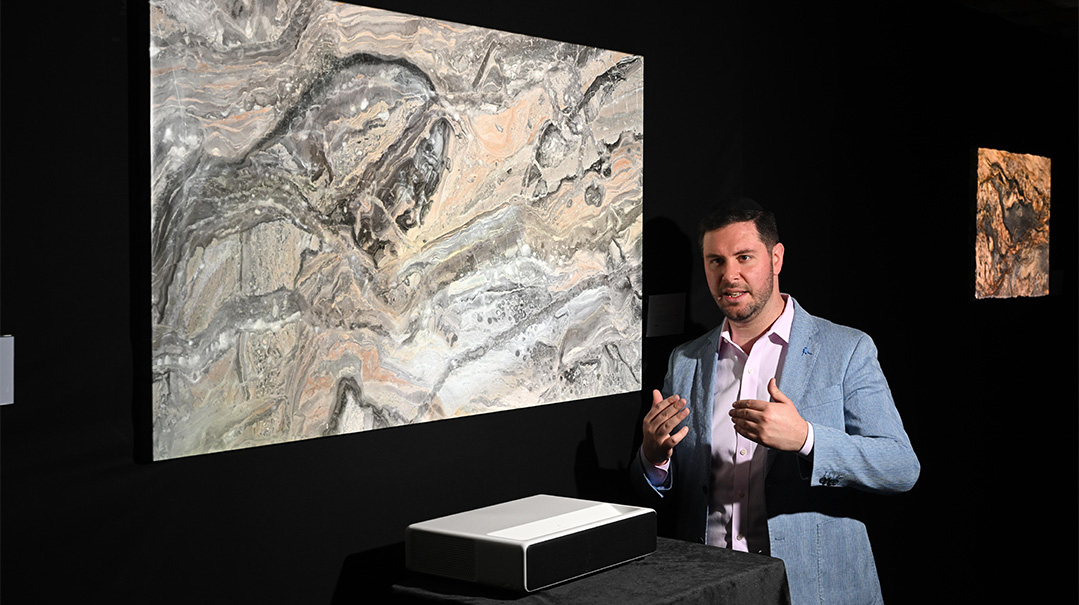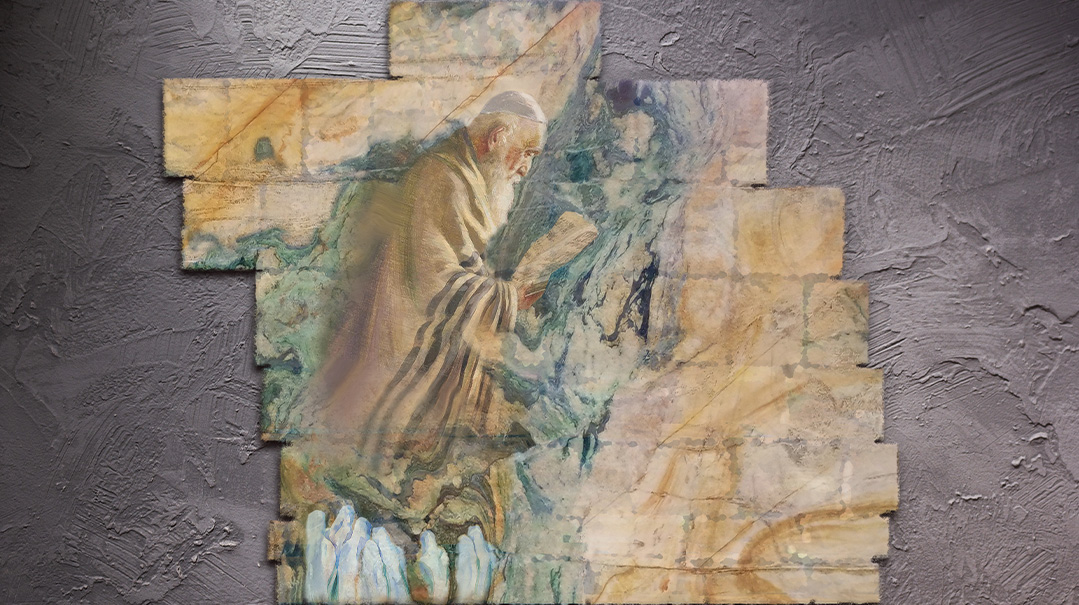Set in Stone
| August 16, 2022A creative team coaxes art to the surface of marble slabs

Photos: Avi Gass
The first time it happened, Arin Jéda was in the Bobover beis medrash in Boro Park. As he waited for the next Minchah minyan to come together, the teenager noticed how the marble swirling veins on the wall looked like a tiger leaping over a pile of stones. But when Jéda tried pointing out the image to his fellow mispallelim, they told him he was crazy.
Over the next 28 years, Jéda, a pseudonym for an artist who prefers to remain anonymous, found more images that no one else seemed to be able to see. He finally found a kindred spirit in his wife’s father, who also had an artistic flair and was intrigued by the concept. Propelled by his father-in-law’s enthusiasm, Jéda made numerous trips to various tile stores in search of a promising specimen, and he struck pay dirt with a stone whose veining depicted the image of an elderly man holding a skull in his hands.
“It was profound,” says Jéda. “It was out of the box. It was art. My father-in-law loved it and he encouraged me to find a way to share it with the world.”
Jéda began fine-tuning the concept, painting and drawing the images he saw and experimenting with projectors and e-art. In time he partnered up with Jay Zelingold, a marketing strategist who appreciated that the idea had serious potential if it could be developed professionally, replicated and systemized.

One in a Million
Typically, art is the expression of an artist’s inspiration, but Jéda’s concept was the opposite — discovering inspiration from expression that already exists in nature.
“We worked together and created a few pieces, slowly proving that the concept worked until eventually we realized that we had a model we could run with,” says Zelingold.
Zelingold launched ALMA Art, a collective with multiple artists involved, and is its managing director, while Jéda has taken on more of an advisory role, although he’s the artist of note for most of ALMA’s current pieces. ALMA, which translates to “world” or “earth” in Aramaic, is also an acronym for Accentuated Light Mapping Art, a process which took a full five years to develop and perfect, and uses beams of light to highlight images embedded in slabs of quartzite, marble, onyx and granite.
Finding a stone with potential is no easy feat. “We go through tons of stones till we find one with art-scene potential and, even then, we need to go through tens, oftentimes hundreds, of them, to find one with an actual, compelling image,” says Jéda. “It’s like a diamond — one in a million — and when we find one, we celebrate.”
The process of creating a finished piece of ALMA art involves considerable intricacy, complexity and precision, and significant amounts of talent. Old fashioned artistry and cutting edge technology both come into play, as a digital light overlay highlighting specific veins within the slab is calibrated and projected onto the stone, accentuating the existing image and, in turn, bringing it to life.
“What’s amazing is the idea that this is a story that’s found in nature,” notes Zelingold. “We’re not just painting another painting. This is all about the stone.”
Oops! We could not locate your form.







